Abstract
1. Experiments have been conducted in order to establish the changes in oculomotor activity which take place when the human subject attempts to pursue an intermittently illuminated moving target. 2. In an initial experiment, target motion in the horizontal plane was composed of one or two sinusoids at frequencies between 0.11 and 0.2 Hz. The target was illuminated for varying durations (10-320 ms) at intervals between 40 and 960 ms. As pulse interval was increased or pulse duration was decreased there was a progressive increase in eye velocity gain for the smooth component of eye movement. Some smooth eye movement was generated even when the pulse interval was as large as 960 ms. 3. In a second experiment target motion consisted of a triangular waveform in which target presentation was timed to occur at regular intervals throughout each cycle. Overlaying and averaging the response from several cycles revealed a regular pattern of pulsatile activity associated with each target presentation. This response, which was particularly evident when the pulse interval was greater than 1 s, consisted of an initial build-up of smooth eye velocity followed by an exponential decay with a time constant of 0.5-2 s. When the pulse interval was less than 1 s there was a summation of the transient responses so that eye movement appeared quite smooth when pulse interval was reduced to 320 ms. 4. The pulsatile nature of the response was accentuated when the target was made to execute a staircase-ramp waveform in which the target was illuminated only during the ramp component. The elimination of position change between ramps and the ability to achieve higher target velocity led to clear evidence of the summation of transient oculomotor responses. 5. The summated effects, however, were not simply attributable to the addition of responses to individual target presentations as indicated by the timing of each response. The eye velocity pulse was frequently initiated 200-300 ms prior to target appearance, and well before the time (100 ms) at which visual feedback would be expected to become effective. 6. The effect of target step displacement alone was investigated by examination of the smooth eye movement initiated by varying numbers of steps in the waveform. This showed that the basic step response had a peak velocity of no more than 8-10 deg/s in most individuals.(ABSTRACT TRUNCATED AT 400 WORDS)
Full text
PDF
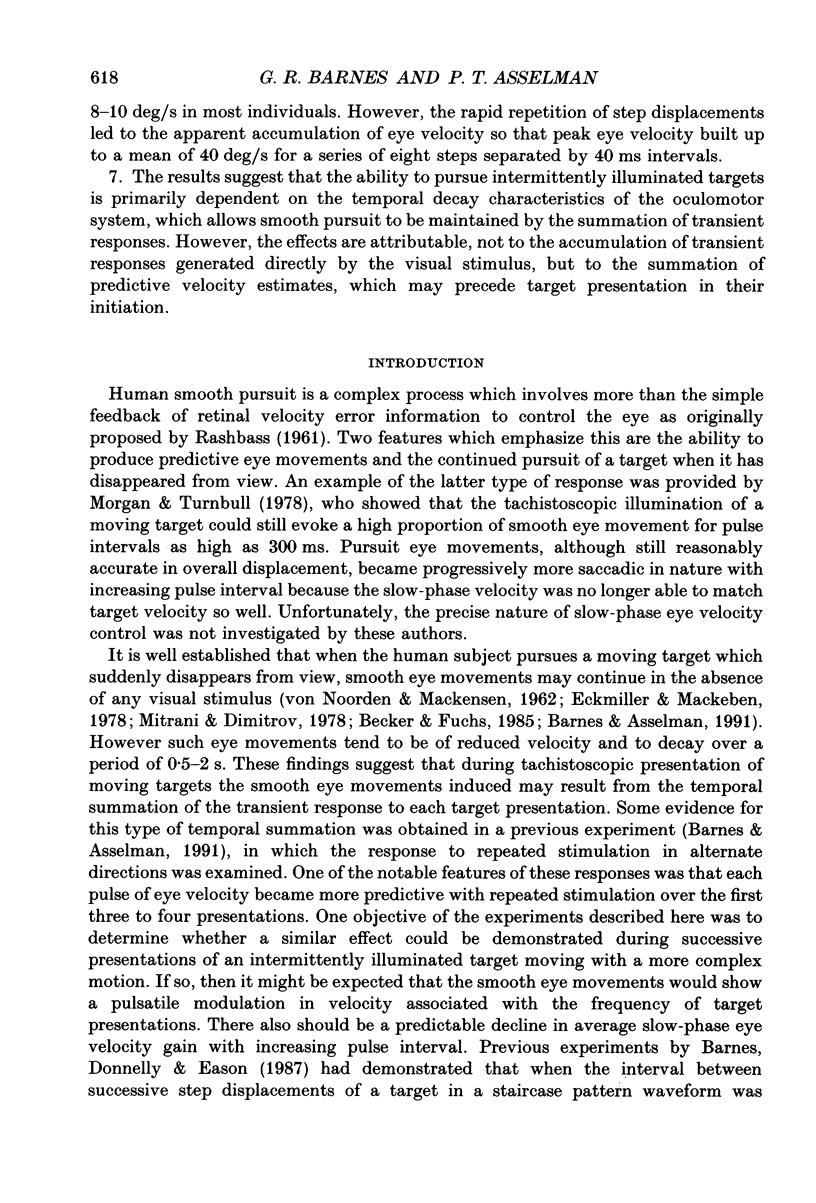

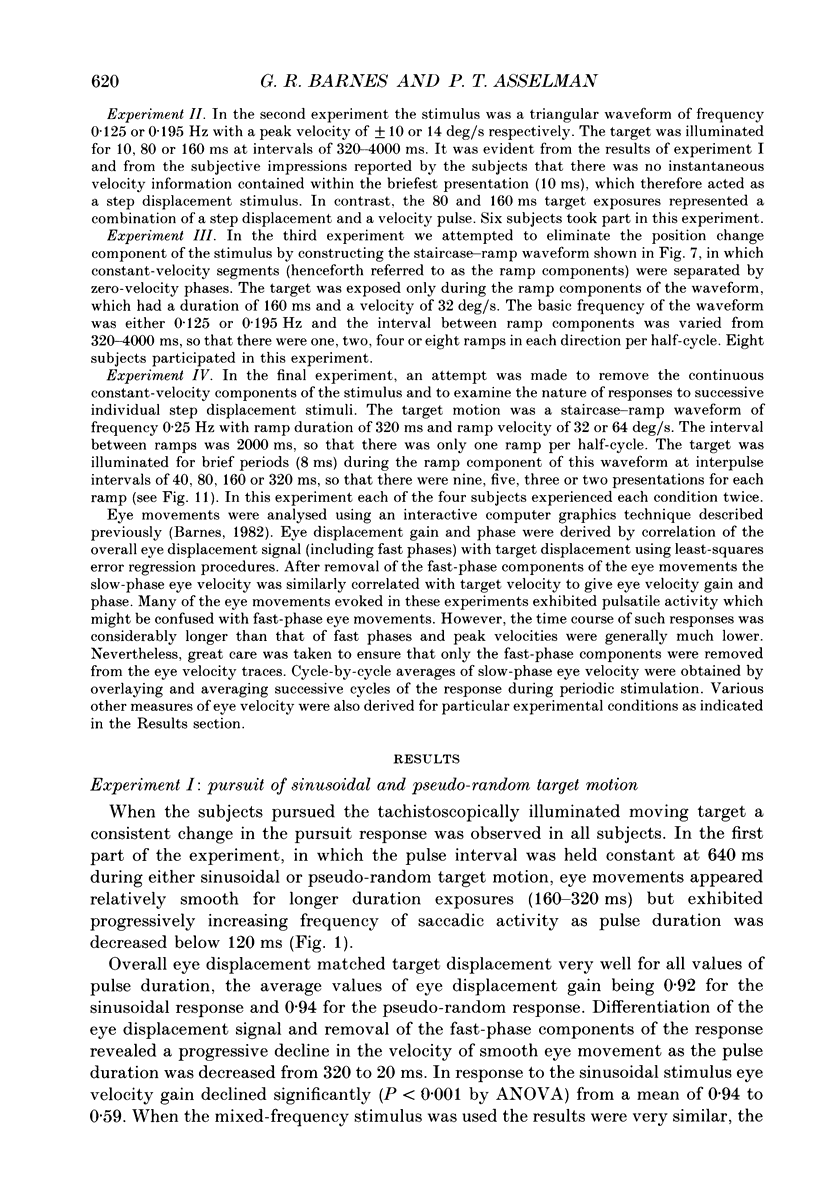
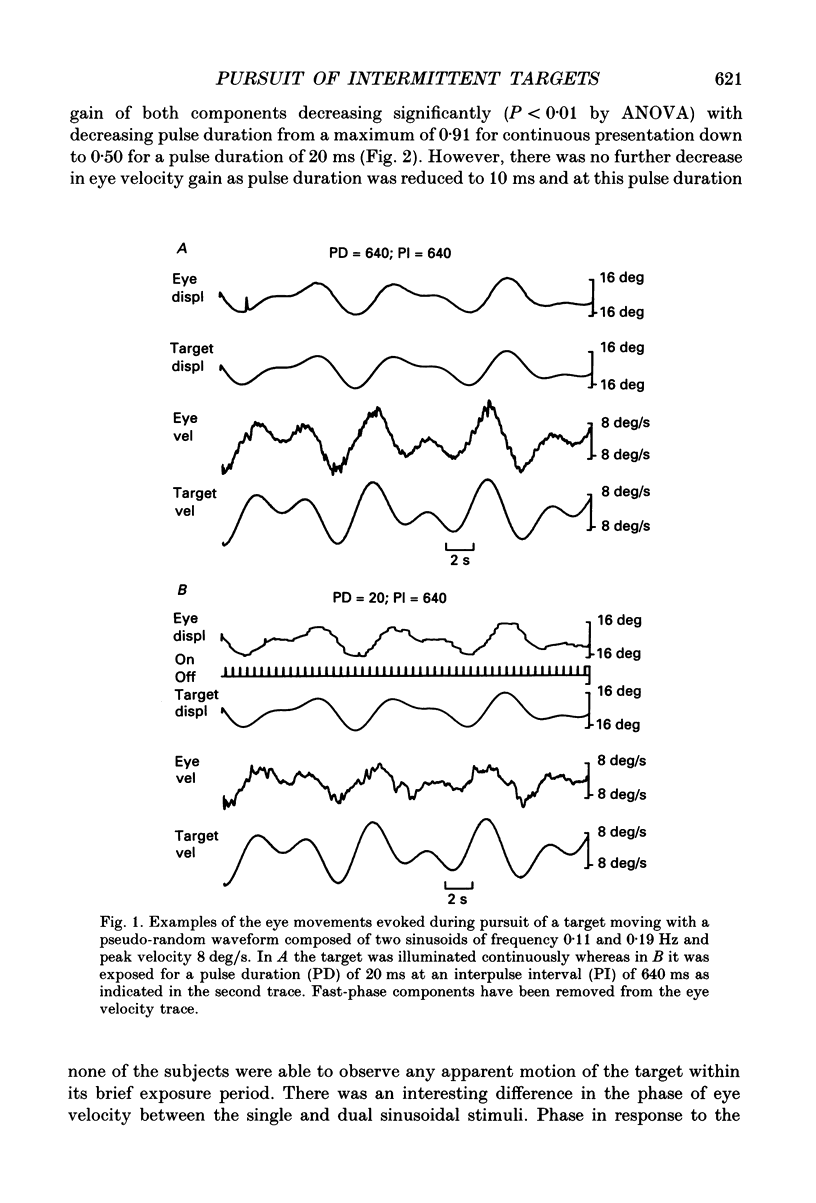
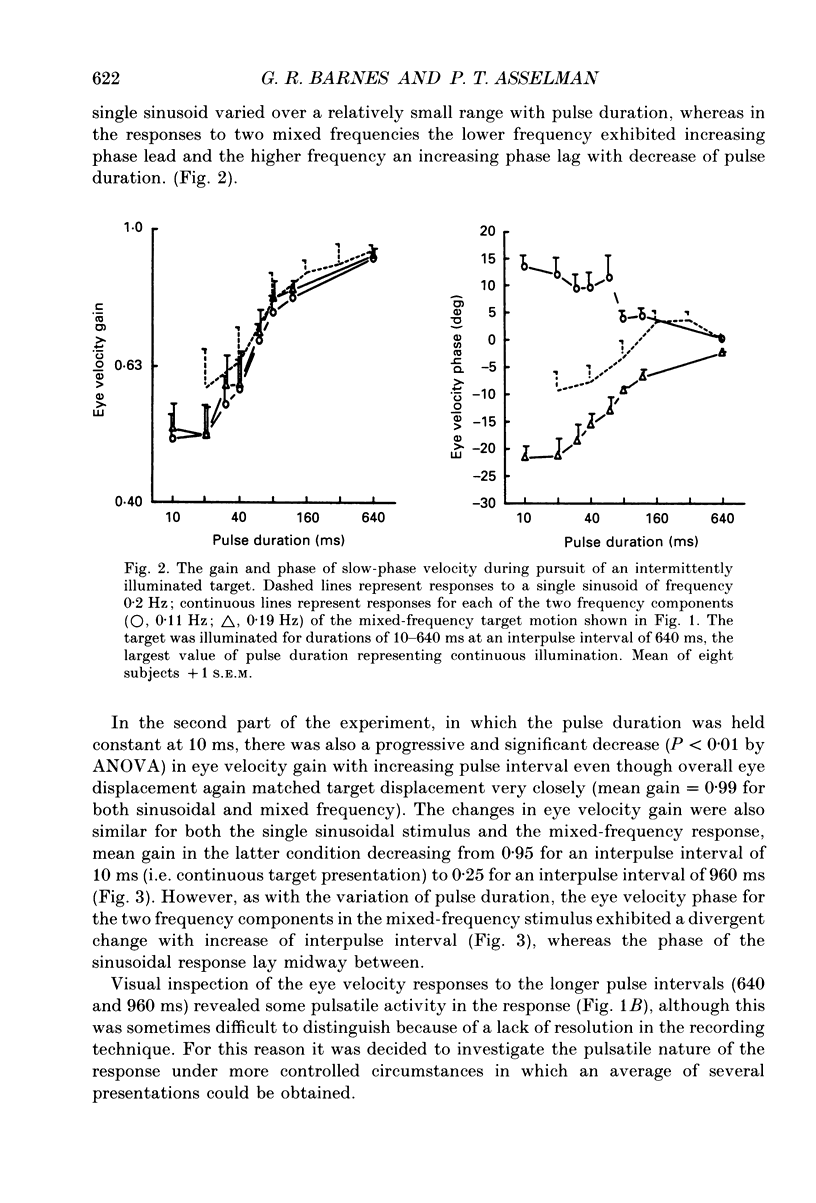

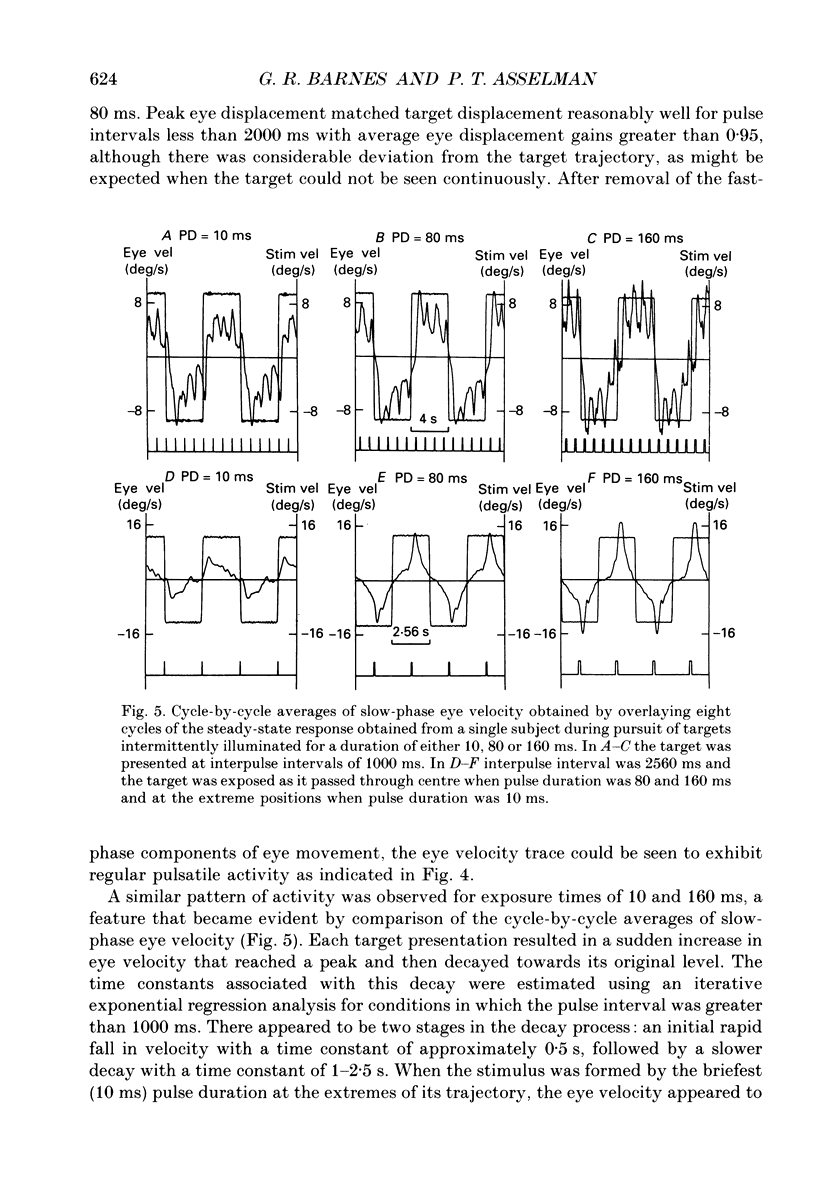


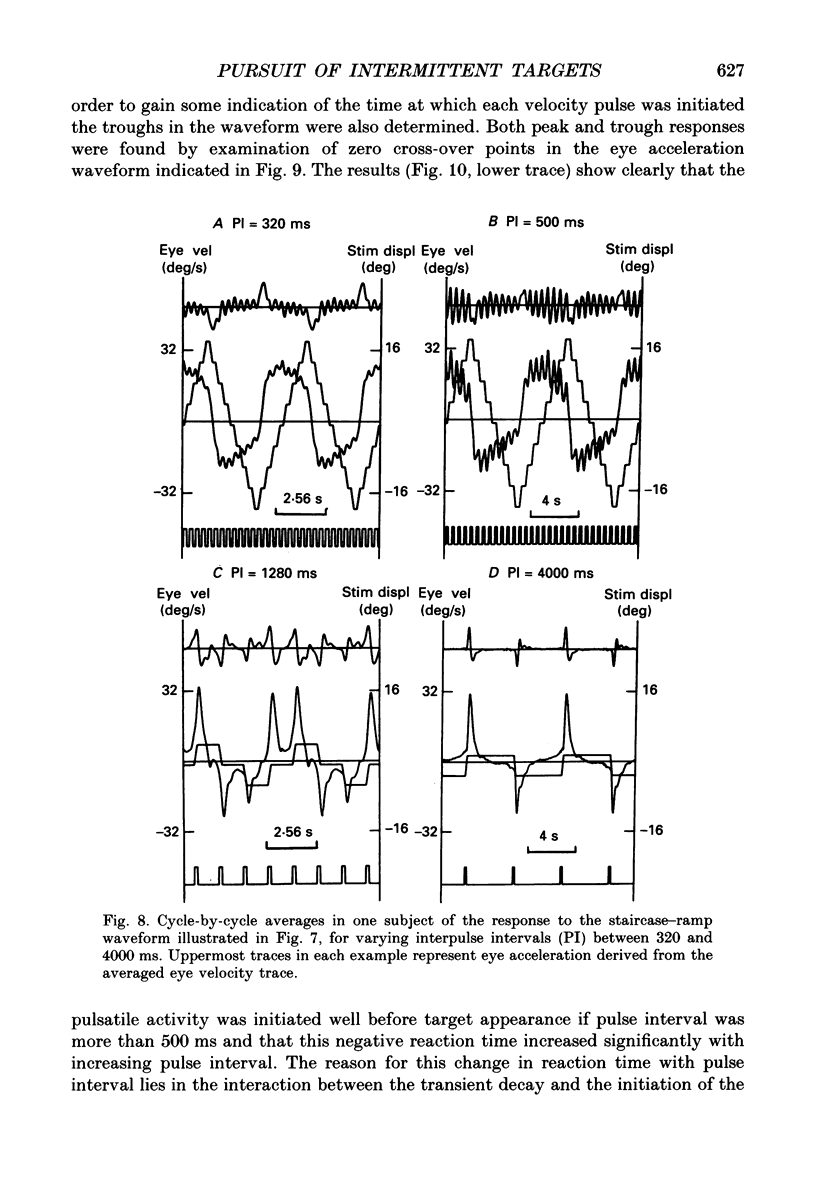

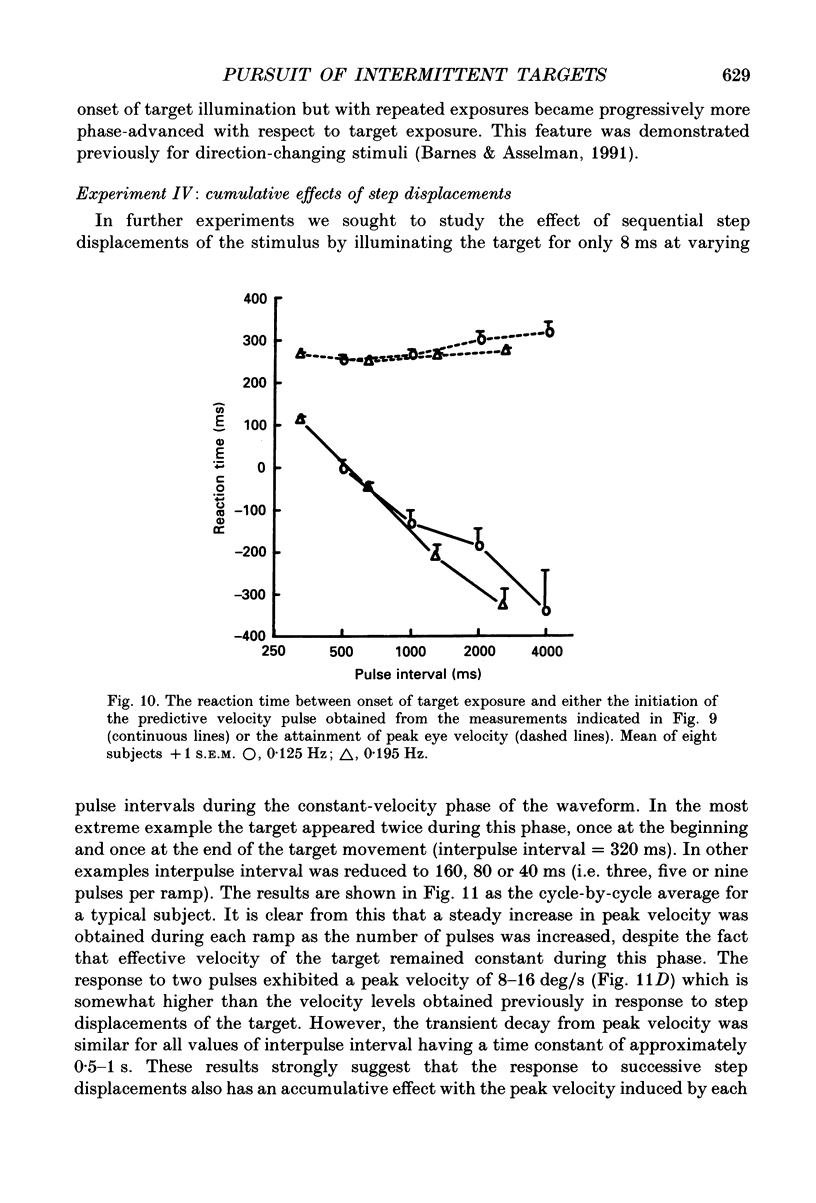

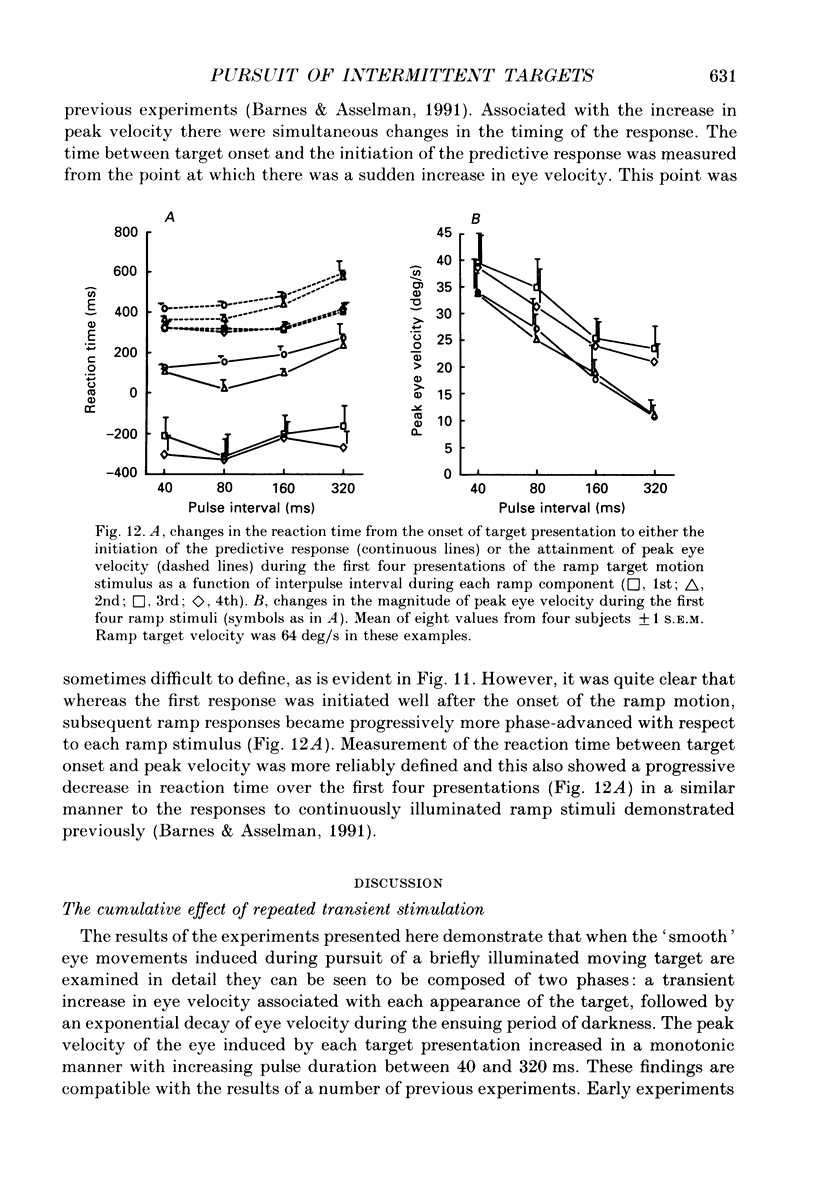

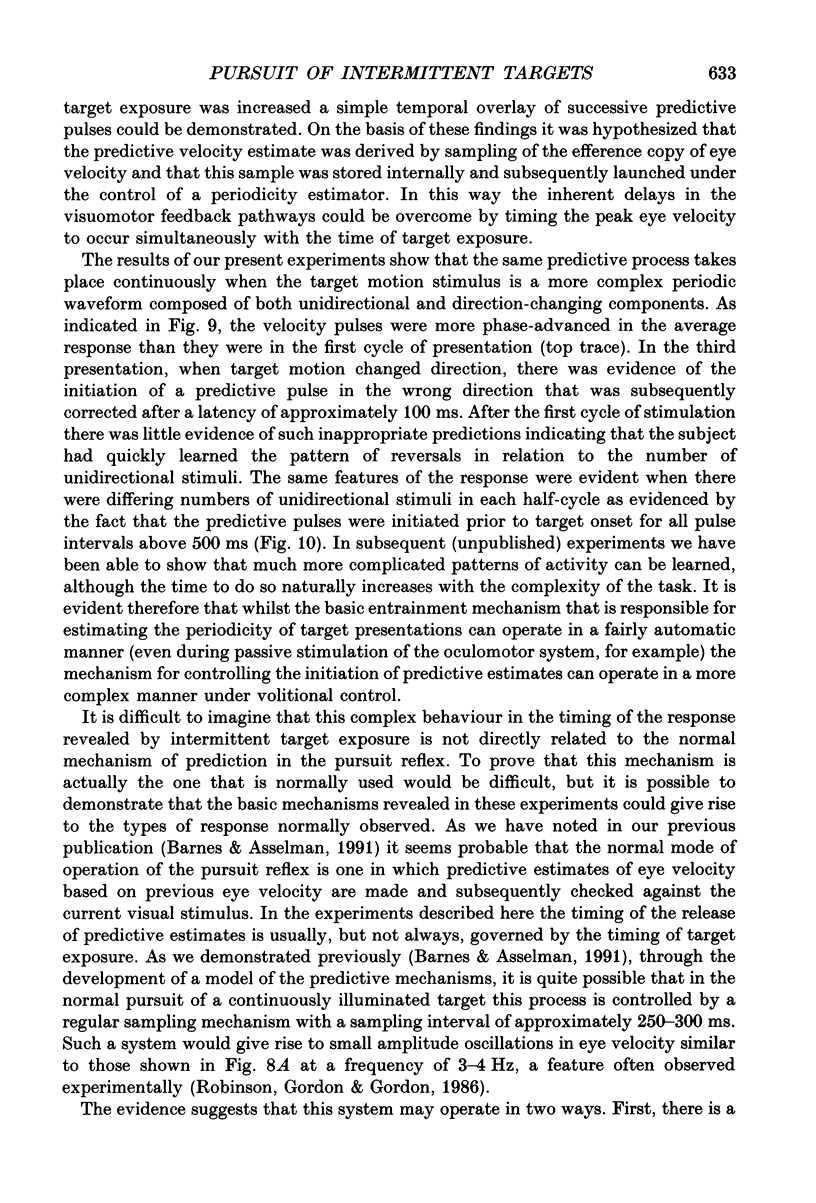


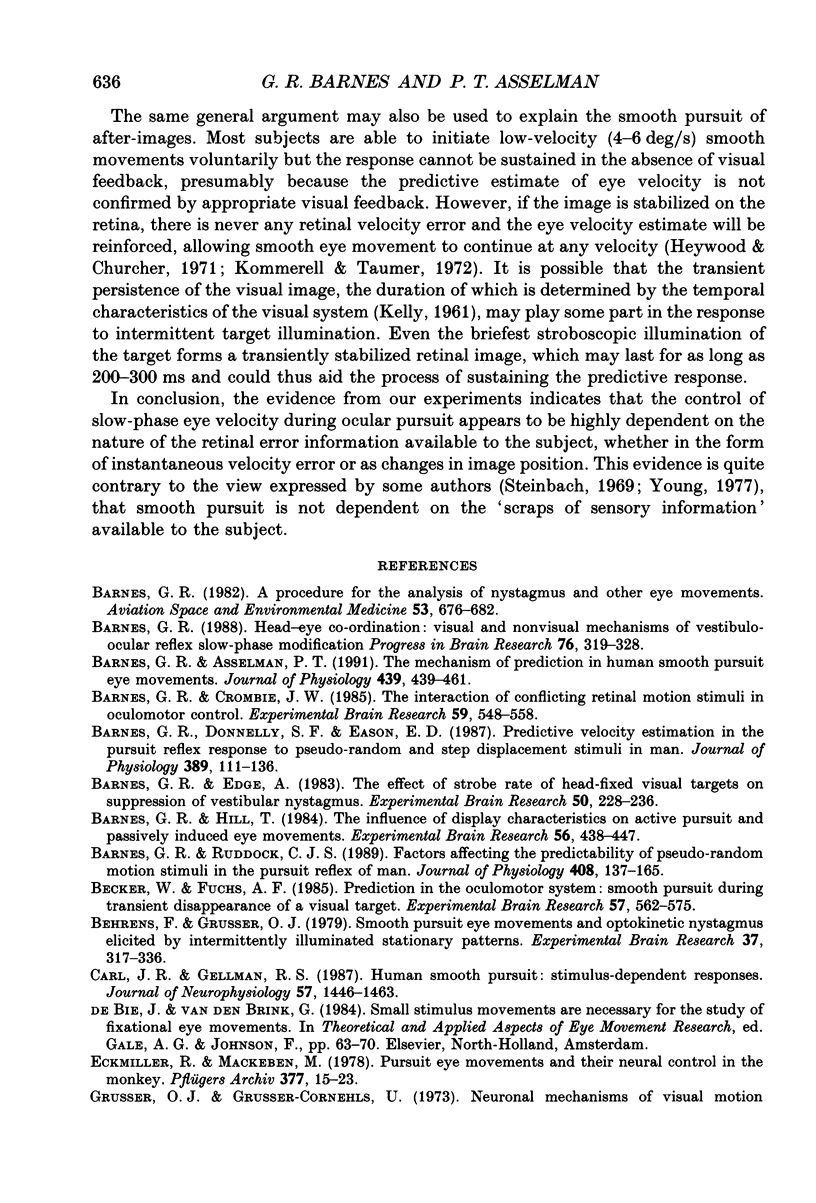

Selected References
These references are in PubMed. This may not be the complete list of references from this article.
- Barnes G. R. A procedure for the analysis of nystagmus and other eye movements. Aviat Space Environ Med. 1982 Jul;53(7):676–682. [PubMed] [Google Scholar]
- Barnes G. R., Asselman P. T. The mechanism of prediction in human smooth pursuit eye movements. J Physiol. 1991 Aug;439:439–461. doi: 10.1113/jphysiol.1991.sp018675. [DOI] [PMC free article] [PubMed] [Google Scholar]
- Barnes G. R., Crombie J. W. The interaction of conflicting retinal motion stimuli in oculomotor control. Exp Brain Res. 1985;59(3):548–558. doi: 10.1007/BF00261346. [DOI] [PubMed] [Google Scholar]
- Barnes G. R., Donnelly S. F., Eason R. D. Predictive velocity estimation in the pursuit reflex response to pseudo-random and step displacement stimuli in man. J Physiol. 1987 Aug;389:111–136. doi: 10.1113/jphysiol.1987.sp016649. [DOI] [PMC free article] [PubMed] [Google Scholar]
- Barnes G. R., Edge A. The effects of strobe rate of head-fixed visual targets on suppression of vestibular nystagmus. Exp Brain Res. 1983;50(2-3):228–236. doi: 10.1007/BF00239187. [DOI] [PubMed] [Google Scholar]
- Barnes G. R. Head-eye co-ordination: visual and nonvisual mechanisms of vestibulo-ocular reflex slow-phase modification. Prog Brain Res. 1988;76:319–328. doi: 10.1016/s0079-6123(08)64519-7. [DOI] [PubMed] [Google Scholar]
- Barnes G. R., Hill T. The influence of display characteristics on active pursuit and passively induced eye movements. Exp Brain Res. 1984;56(3):438–447. doi: 10.1007/BF00237984. [DOI] [PubMed] [Google Scholar]
- Barnes G. R., Ruddock C. J. Factors affecting the predictability of pseudo-random motion stimuli in the pursuit reflex of man. J Physiol. 1989 Jan;408:137–165. doi: 10.1113/jphysiol.1989.sp017452. [DOI] [PMC free article] [PubMed] [Google Scholar]
- Becker W., Fuchs A. F. Prediction in the oculomotor system: smooth pursuit during transient disappearance of a visual target. Exp Brain Res. 1985;57(3):562–575. doi: 10.1007/BF00237843. [DOI] [PubMed] [Google Scholar]
- Behrens F., Grüsser O. J. Smooth pursuit eye movements and optokinetic nystagmus elicited by intermittently illuminated stationary patterns. Exp Brain Res. 1979 Oct;37(2):317–336. doi: 10.1007/BF00237717. [DOI] [PubMed] [Google Scholar]
- Carl J. R., Gellman R. S. Human smooth pursuit: stimulus-dependent responses. J Neurophysiol. 1987 May;57(5):1446–1463. doi: 10.1152/jn.1987.57.5.1446. [DOI] [PubMed] [Google Scholar]
- Eckmiller R., Mackeben M. Pursuit eye movements and their neural control in the monkey. Pflugers Arch. 1978 Oct 18;377(1):15–23. doi: 10.1007/BF00584369. [DOI] [PubMed] [Google Scholar]
- Heywood S., Churcher J. Eye movements and the afterimage. I. Tracking the afterimage. Vision Res. 1971 Oct;11(10):1163–1168. doi: 10.1016/0042-6989(71)90120-9. [DOI] [PubMed] [Google Scholar]
- KELLY D. H. Visual response to time-dependent stimuli. I. Amplitude sensitivity measurements. J Opt Soc Am. 1961 Apr;51:422–429. doi: 10.1364/josa.51.000422. [DOI] [PubMed] [Google Scholar]
- Kommerell G., Täumer R. Investigations of the eye tracking system through stabilized retinal images. Bibl Ophthalmol. 1972;82:288–297. [PubMed] [Google Scholar]
- Kowler E., Steinman R. M. The effect of expectations on slow oculomotor control. I. Periodic target steps. Vision Res. 1979;19(6):619–632. doi: 10.1016/0042-6989(79)90238-4. [DOI] [PubMed] [Google Scholar]
- Mitrani L., Dimitrov G. Pursuit eye movements of a disappearing moving target. Vision Res. 1978;18(5):537–539. doi: 10.1016/0042-6989(78)90199-2. [DOI] [PubMed] [Google Scholar]
- Morgan M. J., Turnbull D. F. Smooth eye tracking and the perception of motion in the absence of real movement. Vision Res. 1978;18(8):1053–1059. doi: 10.1016/0042-6989(78)90034-2. [DOI] [PubMed] [Google Scholar]
- Pola J., Wyatt H. J. Target position and velocity: the stimuli for smooth pursuit eye movements. Vision Res. 1980;20(6):523–534. doi: 10.1016/0042-6989(80)90127-3. [DOI] [PubMed] [Google Scholar]
- RASHBASS C. The relationship between saccadic and smooth tracking eye movements. J Physiol. 1961 Dec;159:326–338. doi: 10.1113/jphysiol.1961.sp006811. [DOI] [PMC free article] [PubMed] [Google Scholar]
- Robinson D. A., Gordon J. L., Gordon S. E. A model of the smooth pursuit eye movement system. Biol Cybern. 1986;55(1):43–57. doi: 10.1007/BF00363977. [DOI] [PubMed] [Google Scholar]
- Steinbach M. J. Eye tracking of self-moved targets: the role of efference. J Exp Psychol. 1969 Nov;82(2):366–376. doi: 10.1037/h0028115. [DOI] [PubMed] [Google Scholar]
- VON NOORDEN G. K., MACKENSEN G. Pursuit movements of normal and amblyopic eyes. An electro-ophthalmographic study. 1. Physiology of pursuit movements. Am J Ophthalmol. 1962 Feb;53:325–336. doi: 10.1016/0002-9394(62)91183-2. [DOI] [PubMed] [Google Scholar]
- Whittaker S. G., Eaholtz G. Learning patterns of eye motion for foveal pursuit. Invest Ophthalmol Vis Sci. 1982 Sep;23(3):393–397. [PubMed] [Google Scholar]


